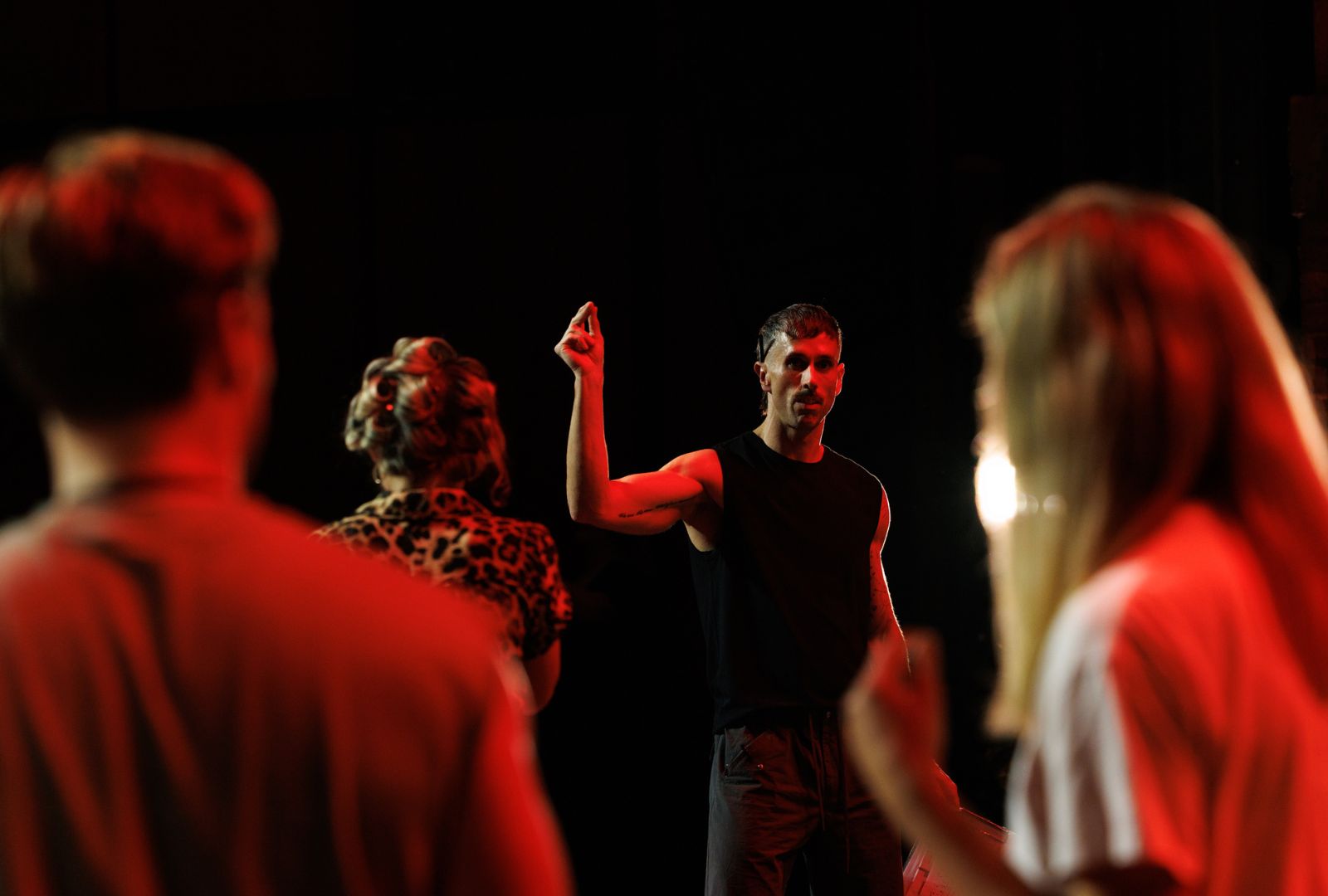This Winter Production Season, NIDA is proud to present Nine, the musical inspired by Fellini’s 8 ½, with choreography by Brendan Yeates. Brendan is an award-winning choreographer and veteran of musical theatre whose work has taken him across the world. We spoke to him about the production and what he’s most excited about sharing with audiences, as well as his inspirational journey from humble beginnings in a small town to international stages and viral videos.
You’re an award-winning choreographer that has worked across major productions in Australia and internationally. Can you tell us some of your career highlights?
Honestly, so many of my favourite career highlights stem from moments in the rehearsal room. There’s nothing quite like witnessing growth in real-time—seeing a performer have a breakthrough or watching a creative idea come to life in front of you. One particularly unforgettable moment was during rehearsals for the international tour of Hamilton. Lin-Manuel Miranda himself popped into one of our cover rehearsals. Sharing our version of his work with the man who wrote it was surreal—it’s hard to describe the energy in the room that day. Another major highlight has been the travel and the global connections formed through working on commercial theatre. The relationships we build with international teams on imported productions are incredibly valuable. They’ve opened doors not only for me but for many Australians who now find themselves living and working overseas—some even on Broadway. Although I’ve spent time working in LA, the dream of New York is still alive and well for me.
What is your favourite part about working as a choreographer?
The sense of play is everything to me. As a choreographer, I get to let my imagination run wild—it’s a beautiful blend of creativity and childlike wonder. Every rehearsal room becomes a sandbox for experimenting with movement, ideas, and storytelling. There’s something incredibly visceral about that process. What’s also special is knowing the work resonates beyond the room. A video we created for Hamilton x Rihanna unexpectedly went viral. It was picked up by international outlets, including E! News, and reached over 27 million views. Feeling that kind of reach and knowing your work has touched people across the world is both exhilarating and humbling. There’s a unique responsibility in that, too—because what we put out into the world matters.
You come from a small country town. Do you have any special advice for anyone who dreams of working in the performing arts but perhaps doubts themselves or has additional barriers to joining the industry?
Absolutely. First, work hard—and then network even harder. When I started out, I was up against city kids who had years of industry exposure and connections from a young age. Coming from a small town, I didn’t have that. But I had drive, and I had a point to prove. I was told by more than a few people that I wouldn’t make it, and honestly, I used that doubt as fuel. My biggest advice? Seek out opportunities. Apply for scholarships and grants—resources that can make a world of difference. For me, attending the VCA Secondary School on a scholarship was pivotal. Without that financial support, my parents wouldn’t have been able to afford the tuition or boarding costs. There are pathways out there, even if they’re not immediately obvious.

In your opinion, what skills make a great musical theatre artist?
A great musical theatre artist understands the balance between individuality and the bigger picture. It’s easy to become attached to your track or specific choreography, but the ability to zoom out and consider the whole world of the show is vital. Flexibility and adaptability are huge assets. Sometimes moments are cut, adjusted, or reimagined—and that’s not a reflection of someone’s talent, but of what serves the story best. Artists who can roll with those changes and contribute positively to the overall energy are the ones who stand out in the long run.
What works inspired you to become a choreographer?
I’ve always been drawn to artists who push boundaries and reimagine what dance can be. Frantic Assembly and Ryan Heffington are two huge influences. Their work shows that movement doesn’t have to look a certain way to be powerful—it just has to be honest. What inspires me most is versatility. Seeing choreographers and companies constantly evolve with the times reminds me to keep growing too. Dance, like all art, should reflect the world we live in—and that world is always changing.
Why did you decide to work on NIDA’s production of Nine?
I wanted to challenge myself creatively. I’m used to working with dancers and teams who already speak my movement language. But Nine offered me a different kind of opportunity: to create choreography rooted in character and story, using the unique skill sets of the cast in front of me. This process asked me to shift from creating visuals I saw in my head to building movement that felt authentic to each performer. It was about molding the material to the room, not forcing the room to match a preconceived image. It stretched me—and I loved that.
What drew you to this particular story?
Honestly? Be Italian. That number has lived rent-free in my mind for years. There’s something in its earthy, mischievous, and almost devilish energy that really speaks to me. I’ve always wanted to create a piece to that song, and getting to do so with this cast has been an absolute blast. More broadly, the themes of Nine—creative obsession, memory, identity—are so rich. There’s a lot to mine emotionally and physically, and it’s been rewarding to explore those layers through movement.
How would you describe the choreography in Nine and what has been the most challenging/rewarding part about directing the choreography?
Nine is a bit of an outlier in the musical theatre world—it doesn’t follow the usual format, so I felt encouraged to do the same with my choreography. Some sections are bold, loud, and almost aggressive, while others are playful, delicate, or stylized to the point of caricature. What makes it fun is the sheer variety. We’ve got everything from the glamorous precision of Folies Bergères to the chaotic, camp energy of The Grand Canal. The movement needed to reflect those contrasts, and I’ve had the best time playing in those different worlds.
The biggest challenge has been finding the right level of difficulty for the cast. As educators and creatives, we want students to be stretched—but not to the point of breaking. Calibrating that “sweet spot” has been new for me, and it’s taken patience and constant adjustment. The most rewarding part? Watching the students rise to the challenge. Seeing them nail something they once found impossible, and then watching their confidence grow—that’s magic. Their celebrations become yours too. It’s fulfilling to share in these victories.
What are you most excited for audiences to take away from this production?
I hope audiences leave feeling connected to the strength, power, and complexity of the women in this story. There’s a quiet force running through the piece—a reminder of how multifaceted and resilient women can be, especially in a world that often tries to define them narrowly. Whether through laughter, reflection, or awe, I hope people feel something real.
Nine is on stage now at NIDA. Book your tickets here.
